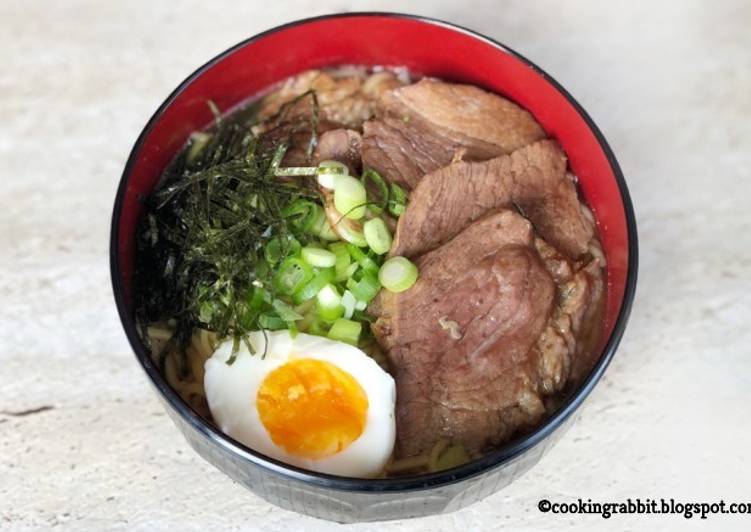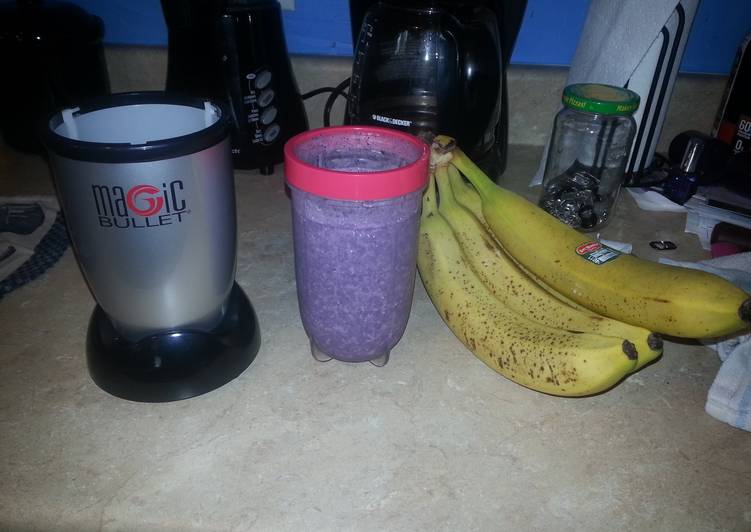
Hey everyone, hope you’re having an incredible day today. Today, we’re going to make a special dish, shoyu ramen. It is one of my favorites. For mine, I will make it a little bit unique. This is gonna smell and look delicious.
Shoyu ramen is one of the most well liked of current trending foods on earth. It is enjoyed by millions daily. It is simple, it’s quick, it tastes yummy. They are fine and they look fantastic. Shoyu ramen is something that I have loved my entire life.
Bringing ramen home takes a trip to an Asian. In a medium saucepan over medium heat, bring chicken broth to a bare simmer. Shoyu is just one of several types of ramen. Other common categories include shio, tonkotsu, and miso ramen.
To begin with this particular recipe, we must prepare a few ingredients. You can have shoyu ramen using 22 ingredients and 12 steps. Here is how you can achieve that.
The ingredients needed to make Shoyu ramen:
- Take 3 packages ramen noodles
- Make ready for the soup:
- Make ready 1 1/2 tbsp sesame oil
- Take 3 cloves garlic (minced)
- Prepare 5-6 cm piece of ginger (minced)
- Take 3 tsp chili bean sauce
- Make ready 3 cups chicken stock
- Make ready 3 cups dashi
- Take 3 3/4 tbsp soy sauce
- Prepare 3/4 tbsp sake
- Take 2 tsp salt (to taste)
- Make ready 1 1/2 tsp granulated sugar
- Get for the dashi:
- Get 20 gms dried kombu
- Make ready 30 gms bonito flakes
- Make ready toppings (optional):
- Get 1 lt water
- Take Homemade Chashu
- Take Menma (fermented bamboo shoots)
- Take 1 soft-boiled egg
- Take 3 pieces nori (seaweed)
- Prepare 3-6 slices Narutomaki (Japanese fish cakes)
It is popular in Japan, Hawaii, and becoming more popular in the mainland U. It is a beautiful dish that can be made about a million different ways. What is Shoyu Ramen? 'Shoyu' means soy sauce in Japanese. Shoyu Ramen simply refers to ramen served with a soy sauce-based broth that is usually in clear, brown color.
Steps to make Shoyu ramen:
- Preparing the Dashi: Wipe your kombu with a damp cloth to clean off any impurities, then make a few shallow cuts into the kombu.
- Add the water to a pot and add the kombu to and the pot. Allow it to soak for about 30 minutes before turning on the heat.
- Turn the heat on medium and let it boil slowly. Remove from heat just as the water begins to boil.
- Add the bonito flakes and return to the heat. Allow the water to simmer for another 1 minute. Be careful not the let it boil over.
- Remove the dashi from the heat and wait for the bonito flakes to sink to the bottom of the pot.
- Finally, strain the dashi and use for the rest of this recipe. If there is any leftover dashi it can be stored in the fridge for about 1 week.
- Preparing the Soup: Heat up the sesame oil in a large pot and add your minced garlic and ginger. Sauté until fragrant.
- Add the chilli bean sauce and mix well.
- Next add the rest of the ingredients for the soup and allow it to simmer for several minutes over medium low heat.
- Season the soup with salt, and then strain the soup through a fine mesh strainer or cheese cloth into another pot.
- Once the soup is done, prepare the ramen noodles as per packet instructions.
- Place the noodles in a bowl and add your toppings before ladling over with the soup. Serve immediately.
What is Shoyu Ramen? 'Shoyu' means soy sauce in Japanese. Shoyu Ramen simply refers to ramen served with a soy sauce-based broth that is usually in clear, brown color. If you're in Tokyo, Shoyu is the most familiar form of ramen you'll find. To make a good bowl of ramen is an art form itself. Shoyu Ramen is one of the most popular Japanese ramen flavors next to shio (salt) ramen and miso ramen.
So that’s going to wrap it up for this special food shoyu ramen recipe. Thank you very much for your time. I am confident that you will make this at home. There’s gonna be more interesting food in home recipes coming up. Remember to save this page in your browser, and share it to your family, colleague and friends. Thank you for reading. Go on get cooking!

